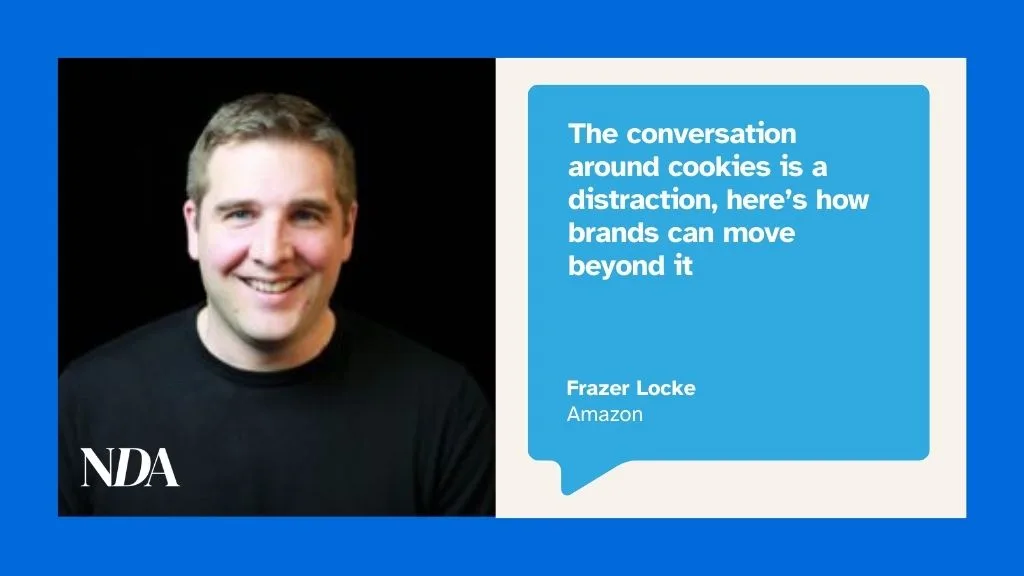By Frazer Locke, Director, EU & APAC AdTech Sales, Amazon Ads, Amazon
Let’s be honest, third-party cookies have always been limiting. Despite being widely used they offer a false precision, and the continued conversation around what marketers will do when they’re deprecated remains a distraction. Now is our chance to do better, for both consumers and brands.
The way we can help brands to do better, and deliver relevant advertising that matches customers with products and brands they’re genuinely interested in, is through solutions such as audience modelling and contextual targeting.
These solutions are powered by a combination of contextual and first party signals using advanced AI, to deliver advertising that is more relevant and helps brands better understand how their customers shop, stream, and browse. They will define the next era of digital advertising, and brands can start their journey today, by utilising solutions that are already available, all without a third-party cookie.
Here’s how:
Improving relevancy through model-based solutions
86% of consumers now consider the experience a company provides to be as important as its products, placing an even greater emphasis on brands to deliver relevant, interesting advertising. Model-based solutions can use shopping, contextual signals and purchase signals to predict ad relevance to help customers discover new products and brands while they browse online.
Powered by AI and machine learning, modelled solutions get smarter with every campaign that runs, improving engagement for the future. This increased relevancy can have a big impact. For example, we’ve seen brands across verticals experience a 34.1% increase in return on ad spend, without having to take any action, after utilising our modelled solutions.
Building better connections with context-based insights
We know addressability remains a key priority for brands, and that this will only be compounded as 95% of web traffic is expected to be unaddressable via traditional advertising methods by the end of this year.
Using AdTech to unlock real-time content consumption insights already available to brands today is an obvious place to start. For example, contextual targeting helps brands reach consumers based on current content consumption, without relying on ad IDs. It does this by enabling brands to select the specific products, categories, and content where they want their ads shown. This helps brands engage with audiences who are already in a mindset aligned with the content they’re consuming.
At Amazon Ads we take this a significant step further. When brands use the Amazon DSP, we use AI and AWS models that leverage our shopping, streaming, and browsing signals with metadata about the content being viewed (i.e., contextual signals) to better ensure customers are seeing ads for products and services they may be interested in. Doing this has already increased return on ad spend across US Amazon DSP campaigns by over a third . This further evidences how we can solve for the future of addressability without relying on third-party cookies or other ad identifiers.
Empowering brands with clean rooms
Clean rooms are central to giving marketers durable analytical capabilities in a world without ad identifiers. Why? Because they’re privacy-safe spaces that enable brands to perform queries across the pseudonymous signals that are available to them. Crucially, this helps marketers to understand how they are reaching customers across different channels, as well as how their ads across those channels are (or aren’t) delivering business impact.
It’s important to remember however that while clean rooms have the potential to empower brands, they are reliant on the inputs they receive. By collaborating across first-party signals and third-party inputs in a clean room, marketers can perform analytics to help them understand customer shopping journeys, generate unique audience segments, and analyse ROI in a safe and secure way.
For example, one domestic appliance brand utilised Amazon Marketing Cloud (AMC), the Amazon Ads clean room solution, to improve the efficiency of their ad spend. The brand worked with their agency, Kepler, and tapped into the Kepler Intelligence Platform (KIP) dashboard that makes AMC analysis available in real time to identify emerging trends, enabling them to see when customers were most likely to engage with their adverts.
They found that while early mornings saw far less efficient conversions, the same activity was far more likely to engage audiences later in the day. With this insight, the brand implemented dayparting to ensure that ads were only displayed at those more active times. This change resulted in a 46% increase in orders, 66% increase in sales and a 15% increase in ROI.
The deprecation of third-party cookies offers brands the chance to do better and new technologies are already making this ambition a reality. Let’s take this opportunity now.










